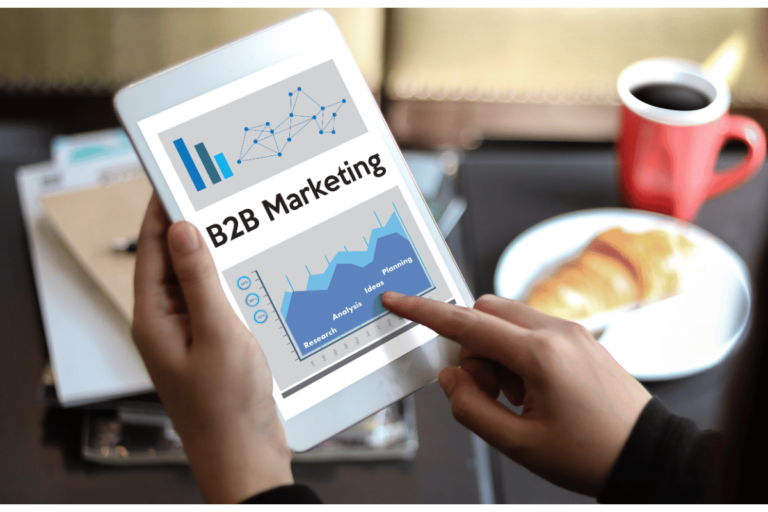The Ultimate Guide to Email Marketing Automation: Boost Engagement on Auto-Pilot
Are you ready to change your email marketing game? Imagine sending personalized messages to your customers at the perfect time, all by itself. That’s what email marketing automation can do for you.
In today’s world, businesses are always looking for ways to get more engagement and results. Email marketing automation is a smart choice. It lets you send targeted content to your audience at every stage of their journey. This helps grow leads and build loyalty.
Did you know 59% of consumers let marketing emails guide their buying choices? Or that automated emails get 119% more clicks than regular emails? These facts show how powerful auto-pilot marketing can be in getting people to engage and buy.
Email marketing automation lets you create personalized content easily. It’s not just about sending emails. It’s about making real connections with your audience that lead to success.
Key Takeaways
- Email marketing automation boosts engagement and drives conversions
- Automated emails have significantly higher click rates than broadcast emails
- Personalized content at scale is achievable through automation
- Triggered emails and drip campaigns are key components of effective automation
- Customer lifecycle emails help nurture leads and foster loyalty
Understanding the Power of Email Marketing Automation
Email marketing automation is a big win for businesses wanting to up their marketing game. It makes repetitive tasks easier, giving more time for creative thinking and planning.
What is Email Marketing Automation?
Email automation sets up campaigns that send messages when it’s the right time. It makes sure each message is tailored for the person getting it. This way, you can reach lots of people with messages that really speak to them.
Email Automation Benefits
There are many good things about automating your email campaigns:
- It saves time and resources
- It keeps your brand’s message consistent
- It helps in nurturing leads
- It can lead to higher conversion rates
- It makes customers more engaged
Impressive Statistics
Here’s what the numbers say about email marketing automation:
- Automated campaigns can boost engagement by up to 74%
- Businesses using automation see a 19% increase in revenue on average
- Segmented email campaigns can increase revenue by 760%
- Welcome emails have an average open rate of 82%
These stats show how email automation can really make a difference. It helps businesses create better campaigns, build stronger customer relationships, and grow a lot.
Selecting the Right Email Marketing Automation Platform
Choosing the right email marketing platform is key to your success. With over 4.7 billion email users by 2026, using the best tools is crucial. This helps you stand out in a crowded inbox.
Look for platforms with strong automation, easy-to-use interfaces, and growth potential. Mailchimp, HubSpot, and ActiveCampaign are popular for their varied features. They meet different business needs.
Think about these points when picking your platform:
- Integration with your current tools (CRM, e-commerce platforms)
- Advanced segmentation features
- Customizable automation workflows
- Reporting and analytics capabilities
- Pricing and scalability
Pricing varies a lot. Zoho Campaigns starts at $4 a month, while Keap can go up to $299 monthly. It’s important to find a balance between cost and features.
BallerTV saw a 30% increase in click-through rates with Customer.io. Mysa’s revenue grew over 592% with targeted email marketing.
The right platform can greatly improve your results. Automated emails can make 320% more revenue than non-automated ones. They also have an average open rate of 45%, compared to 18% for non-automated emails.
Building a Robust Subscriber Segmentation Strategy
Subscriber segmentation is key to successful email marketing. It divides your audience into groups for tailored messages. This makes your communication more effective and personal.
Why Audience Segmentation Matters
Segmenting your email list boosts your marketing. It can increase open rates by up to 30% and click-through rates by 18%. This means better conversion rates and ROI for your email marketing.
Effective Segmentation Criteria
Consider these factors for meaningful segments:
- Demographics: Age, gender, location
- Behavior: Past purchases, website activity
- Preferences: Product interests, communication frequency
- Lifecycle stage: New subscriber, loyal customer, inactive user
Implementing Dynamic Segmentation
Dynamic segmentation elevates your strategy. It updates segments with real-time data. This keeps your targeting accurate and messages relevant. With it, you can send messages that match each subscriber’s current needs.
“Personalized customer experiences lead to a 20% increase in customer retention rates.”
A strong subscriber segmentation strategy helps deliver more relevant content. It improves email performance and drives better marketing results.
Creating Compelling Automated Email Campaigns
Automated email campaigns have changed how businesses talk to their audience. They boost engagement and drive results. With open rates 86% higher than standard emails, they are a big win for marketers.
Email drip campaigns are key to good lead nurturing. They send out relevant content over time, guiding subscribers through your brand. A good welcome series can make a strong first impression, with up to 80% open rates.
Automation in lead nurturing brings great results. Companies using it see a 320% revenue increase over traditional methods. This comes from sending personalized content at scale, meeting individual needs and behaviors.
“Marketing automation allows AI startups to improve leads, increase sales, and scale efficiently.”
To make great automated email campaigns:
- Segment your audience for targeted messaging
- Design a series of emails that guide subscribers through your sales funnel
- Include educational content and promotional offers based on user interactions
- Continuously test and optimize your campaigns for better performance
By using automated email campaigns, you can save time, boost engagement, and increase your marketing ROI. Start using these strategies today to change your email marketing for the better.
The Ultimate Guide to Email Marketing Automation: Boost Engagement on Auto-Pilot
Email marketing automation changes how businesses talk to their audience. It uses smart tools and strategies to make experiences that really connect with people.
Setting up triggered emails
Triggered emails send messages based on what users do. You can send welcome emails, reminders when they leave their cart, or follow-ups after a purchase. These automated messages help keep your brand in mind and get people to engage more.
Designing drip campaigns
Drip campaigns send a series of emails over time. They help lead people through the sales process, teach them about products, and keep them interested. You can set up emails for when someone first joins, to teach about products, or to bring back inactive customers.
Crafting personalized content at scale
Personalizing emails is more than just using someone’s name. With automation, you can make messages fit each person’s actions, likes, and who they are. You can change parts of your emails to match what each person is interested in.
Here’s how to get more people to engage:
- Use what people do to send them messages that matter
- Split your audience into groups for more relevant emails
- Add fun stuff like polls or quizzes
- Try out different subject lines and email content
By getting good at triggered emails, drip campaigns, and personalized content, you’ll have an email marketing plan that works without you doing much. Just remember to check how it’s doing and tweak it to keep getting better results.
Leveraging Behavioral Triggers for Enhanced Engagement
Behavior-based triggers change the game in email marketing. They respond to what customers do right away. This means they watch how people interact with your site or emails, sending messages that really speak to them.
Using these triggers can really up your game. For instance, emails about abandoned carts can get 24-49% more people to buy something for the first time. This shows how important it is to send messages that are both timely and relevant.
Here are some smart ways to use behavior-based triggers:
- Set up automated emails for abandoned carts
- Create product recommendation emails based on browsing history
- Design re-engagement campaigns for inactive subscribers
By using real-time data, you can send messages that feel made just for each customer. This not only makes messages more relevant but also boosts open rates and sales. In 2022, automated emails made up 31.5% of all email marketing orders, even though they only made up 1.8% of all emails sent.
Email automation enhances customer engagement through personalized campaigns and tailored messages.
To really make your behavior-based triggers work, focus on creating content that really speaks to your customers. Personalized messages can lead to more sales and revenue. They send messages that are not just timely but also really relevant, helping to boost your conversion rates.
Optimizing Transactional Emails for Marketing Success
Transactional emails are key in email marketing. They are sent automatically when a customer takes action. This makes them a great chance to connect and offer more.
Types of Transactional Emails
Some common transactional emails are:
- Order confirmations
- Shipping notifications
- Password resets
- Account updates
Best Practices for Transactional Email Design
To make your transactional emails effective:
- Make the design simple and mobile-friendly
- Use clear, direct subject lines
- Focus on the main transactional info
- Add your brand to make it recognizable
Incorporating Marketing Elements
To turn transactional emails into marketing tools:
- Recommend products based on what they’ve bought
- Offer upsells with related items
- Advertise your loyalty program
- Ask for feedback or reviews to build trust
By using these tips, you can make transactional emails more than just routine messages. They can boost engagement and sales while still serving their main purpose.
Measuring and Analyzing Automated Email Performance
Email analytics are key to your automated campaign’s success. By tracking important metrics, you learn about your audience’s likes and dislikes. This knowledge helps you improve your strategies and increase engagement.
First, watch the open rates, click-through rates, and conversion rates. These numbers show how well your emails connect with your subscribers. For example, a high open rate means your subject lines are catchy. A strong click-through rate shows your content is interesting.
A/B testing is a great way to make your automated emails better. Try out different subject lines, content layouts, and call-to-action buttons. This helps you find out what your audience likes best, leading to better engagement and sales.
Did you know? Segment-based email marketing can significantly increase engagement rates with customers.
Keep an eye on these key metrics:
- Delivery rate: Ensures your emails reach subscribers’ inboxes
- Spam rate: Helps maintain list hygiene and relevance
- Unsubscribe rate: Indicates overall subscriber satisfaction
- List growth rate: Reflects the health of your email list
By regularly checking these metrics and using A/B testing insights, you can keep improving your email strategy. This data-driven method will help you create more targeted, engaging, and effective email campaigns.
Ensuring Compliance and Building Trust in Automated Emails
Email marketing rules are key to fair practices and protecting customers. It’s vital for any business using automated emails to know these rules.
Understanding Email Marketing Regulations
Two big laws guide email marketing: the CAN-SPAM Act in the U.S. and GDPR in the EU. These laws set rules for commercial emails and let people opt out of unwanted messages.
- CAN-SPAM Act: Requires clear identification, honest subject lines, and easy unsubscribe options
- GDPR compliance: Focuses on data protection and privacy for EU citizens
Implementing Transparent Opt-in and Opt-out Processes
Being open in email marketing builds trust. Make sure opt-in is clear and unsubscribe is easy to find. This not only follows the rules but also respects your audience’s wishes.
Building Trust Through Ethical Email Practices
Good email practices are the base of successful campaigns. Use real sender info, keep privacy policies clear, and handle data well. These steps help build strong relationships with your subscribers.
By focusing on compliance and ethics in email marketing, you lay a trust foundation. This can lead to more engagement and sales.
Following email marketing rules is more than avoiding fines. It’s about giving your subscribers a good experience and showing you’re a reliable brand online.
Conclusion
Email marketing can be a game-changer with the right automation strategies. Automated campaigns help businesses engage customers and increase sales. In fact, automated emails can make 320% more money than regular ones.
Using smart automation saves time and nurtures leads. Personalized drip campaigns lead to better open and click rates. A third of people open emails just because of the subject line. So, making your subject lines catchy is key.
To excel in email marketing, understand your customer’s journey and tailor your messages. Use tools like Mailchimp and HubSpot to create effective campaigns. By doing this, you can improve customer interaction and achieve lasting success through automated emails.
Source Links
- The Definitive Guide to Email Marketing Automation
- How to automate your email marketing workflow – LeadsBridge
- The Ultimate Guide to Email Automation Software: 10 Must Have Tools
- Your 24/7 Marketer: The Magic of Email Marketing on Autopilot
- The Best Automated Email Campaigns: A Comprehensive Guide – Convesio Knowledge Base
- 10 best email automation platforms and software in 2024 | Marketer Milk
- 10 Best Email Marketing Software Of 2024
- Supercharge Your Email Marketing with 5 Automation Tactics
- Marketing Automation Segmentation: How to Use It to Drive Growth [+ Tools]
- Guide: The Marketing Automation Essentials
- The Beginner’s Guide To Email Marketing Automation – BDOW! (formerly Sumo)
- The Ultimate Guide to Creating a Winning Marketing Automation Strategy
- Boost Engagement with These 10 Email Automation Ideas
- How to create an email marketing automation strategy – Omeda
- Mastering email nurture campaigns: A guide to boosting customer engagement
- Email Nurture Campaign Best Practices: Complete Guide 2024 – Emercury
- Email marketing automation: What it is and why you need it
- The Definitive Guide to eCommerce Marketing Automation
- 8 Effective Ecommerce Email Marketing Automation Flows
- All-in-one Product Adoption Platform – UserGuiding
- The Ultimate Guide to Email Marketing | Email Marketing Strategies
- What is Email Analytics: 15 Metrics & KPIs to Track Performance
- 17 Email Automation Best Practices for 2024
- Drip Campaigns: The Ultimate Guide to Nurturing Leads and Boosting Conversions
- Email Automation – A Perfect Beginner’s Guide in 2023







